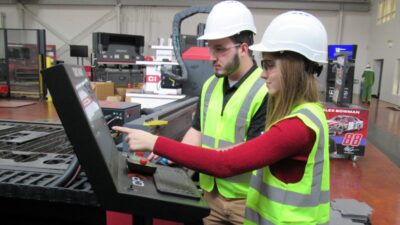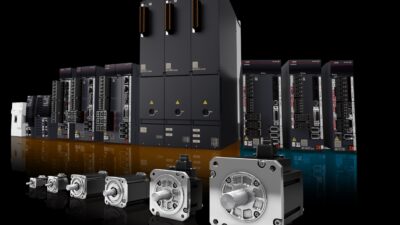Machine design integrates efficient, error-free machining processes with integrated automation to produce small chucked components and help support an expanding automotive industry, Emag said about its VLC 100 G Vertical Grinding Center.

In development of the Emag VLC 100 G Vertical Grinding Center, grinding specialists ensured that the machine design offers efficient, error-free machining processes with integrated automation for the production of small chucked components to help support an expanding automotive industry. Automobile manufacturers globally are enjoying sales increases this year, with the biggest increases in the U.S., China, India, and Russia. However, the rapidly increasing number of vehicles built also brought production challenges, such as subcontractors dealing with increasing output levels, process safety, and component quality. Even the smallest components with complex geometries must be produced with increasing levels of precision.
Small chucked components are typically produced in large quantities. The demand for components, such as gearwheels, planetary gears, chain gears, and flanged components for cars, for instance, have necessary quantities that typically go into the millions; and short cycle times in the production of these components have become mandatory. For instance, the internal contour of a gearwheel must be ground in the shortest possible time, and the machine’s workholding unit must be loaded with a new workpiece just as quickly. In many production environments, this represents a critical moment, because the idle time is commonly a decisive factor in establishing the economic viability of the whole process.
Automatic loading scores heavily
High output levels and short cycle times are why Emag developed the VLC 100 G Vertical Grinding Center for small chucked components with a maximum diameter of 100 mm. The machine uses and onboard pick-up system to load itself. While one workpiece is being machined, the operator or the automation system is putting raw parts on the conveyor belt. This reduces idle time and increases output rates. Another benefit is the vertical machining concept. The design ensures that the grinding sludge falls to the bottom of the machine unhindered, where it is transported out of the machine.
Quality control is integrated
Measuring processes can also be integrated into the machine, making quality control an integral part of the whole process. The measuring probe is located between the machining area and pick-up station, where it is protected from contamination.
Two grinding wheels: The VLC 100 G offers the possibility to use two grinding spindles, which can be used to perform different grinding operations, or to handle both rough- and finish-grinding work. In other words, the first wheel performs the “rough” job of removing excess material from the raw part at high feed rates (the CBN wheel designed to absorb the necessary forces), while the second wheel (with different specifications) takes over the finishing work to guarantee a perfect surface finish on even the most challenging geometries. With the help of this intelligent tooling combination, Emag design engineers have succeeded in drastically reducing the grinding time of even very complex components. “For the removal of large amounts, two wheels offer a shorter cycle time than one, with the first wheel designed to do the rough-grinding and the second one in charge of finish-grinding work,” explained Dr. Guido Hegener, managing director of Emag Salach Maschinenfabrik GmbH in Germany.
A convincing machine concept
The combination of fast loading and efficient grinding processes leads to a very compelling machine concept. The VLC 100 G works very well with the dynamic developments in automotive production. Now, with the rapid increase in required quantities, the demand is for new machine concepts that can be integrated into existing production without any problem. With the VLC 100 G, two features enable it to be integrated without any problems. “Programming the workpieces with our new Emag Navigator software is simple and intuitive, saving valuable setup time. For many production environments, this is an advantage that should not be underrated,” confirms Dr. Hegener. Furthermore, the exceptionally small footprint for the VLC 100 G should make the work of every production planner easier. The stand-alone machine occupies about 4.5 m2 (48 ft2), helping with floor space.
VLC 100 G advantages
The CNC grinder:
- Is compact with high precision
- Can accommodate internal and external grinding spindles
- Has integrated automation and short travel times for short chip-to-chip times
- Has vertical machining for unhindered chip flow, with the grinding sludge falling to the bottom
- Provides optimal access for fast setups
- Adds process safety with an optional measuring probe
– Edited by Mark T. Hoske, content manager, CFE Media, Control Engineering, [email protected].
Go Online




